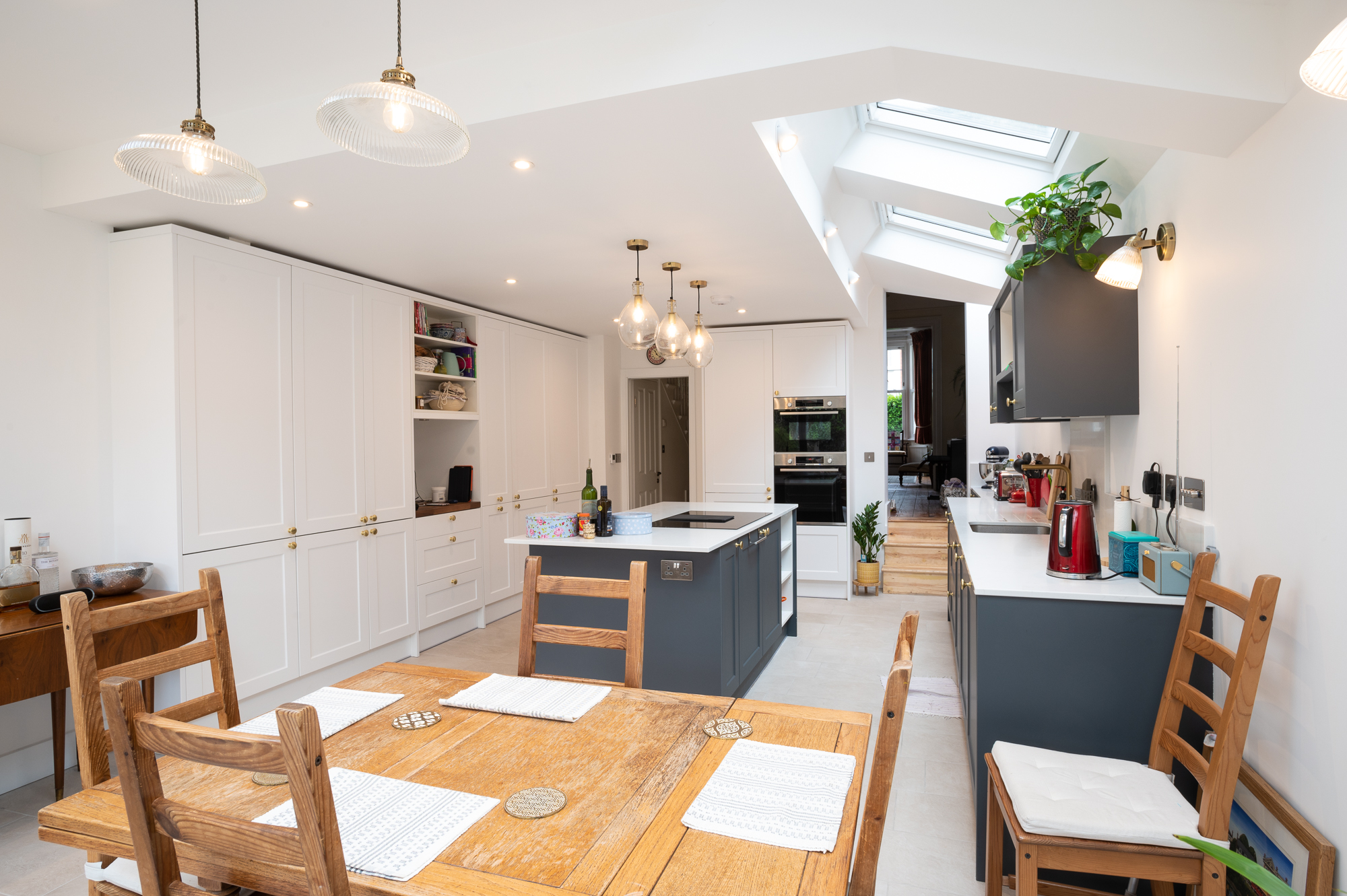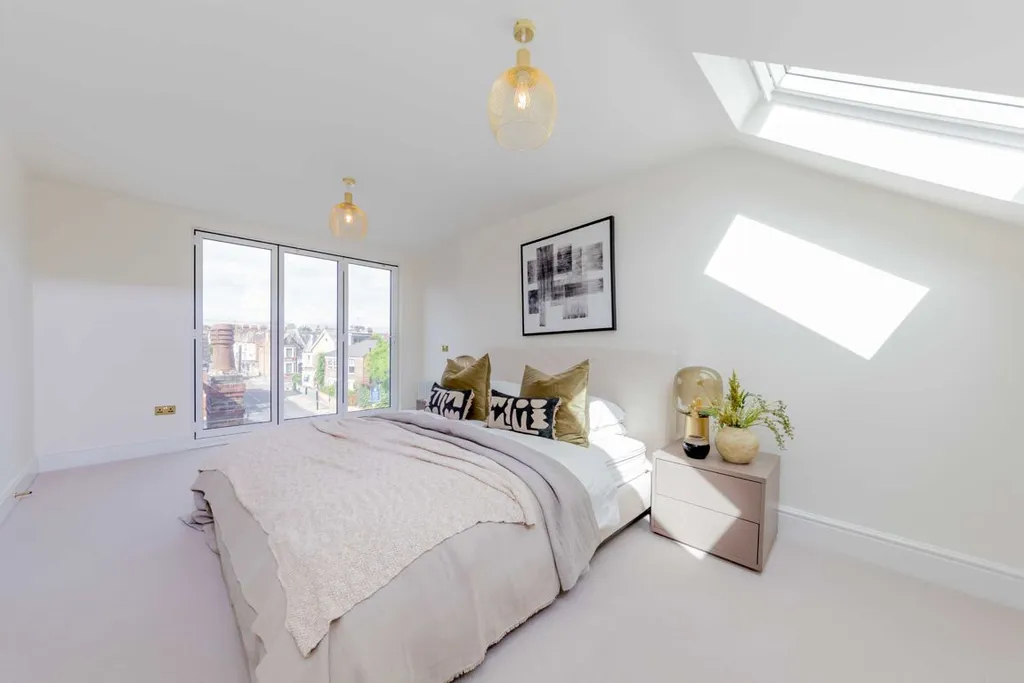Building an extension is all about working your way from aspiration to reality. Getting there without a hitch requires investment in the pre-build process. The pre-build phase lays the groundwork for a legally compliant and well-designed extension. You want to keep your hands clean of legal woes while elevating property values. Navigate the pre-build process of your house extension hitch-free with these tips.
Party Wall Agreements
Whether a loft conversion or a ground extension, a party wall agreement is most likely required when building an extension.
What is a Party Wall?
A party wall separates the buildings of two different owners. It sits directly on the boundary between two properties. It could be a fence, a wall or a hedge.
What is a Party Wall Agreement?
When building on or near a party wall, you need a written agreement with your neighbour. A Party Wall Agreement is an understanding between you and your neighbour that the building work you are planning does not do damage to the neighbouring property.
Steps to Obtain a Party Wall Agreement
The first step is a Party Wall Notice, served at least 2 months before work begins. Either you or a party wall surveyor can serve the notice. We recommend hiring a professional to cover all legal and technical bases.
It informs neighbours about the nature of construction and its duration. Your neighbour can surmise interruptions, alterations or inconveniences by reading your notice. You can serve a party wall notice before gaining planning permission. The adjoining owner can consent, refuse consent or counter-notice. Speaking to your neighbour about your planned home extension before serving them a party wall notice is recommended.
What if they do not respond?
They have 14 days to respond to your party wall notice. If they do not reply, you can serve a final notice. It gives them another 10 days to respond. If there is again no response, you are ‘in dispute.’ You can appoint a surveyor on their behalf to allow the party wall matter to go ahead. It permits the building to commence, but the adjoining owner still has legal protection.
When they agree
If the neighbour consents, work can proceed as planned. You still need a Party Wall Agreement to back up the agreement. It can minimise the risk of dispute.
What if they refuse consent?
If they refuse consent or counter-notice, you can compromise and come to a reworked agreement. Or, if that fails, you need a Party Wall Award. You will need a surveyor who will work for you and the neighbour. If they refuse your surveyor, they can appoint one they pick. You will have to pay their legal fees. If you are unhappy with the Party Wall Award, you can contest that in county court.
What to keep in mind
Remember, your Party Wall Agreement should also contain a record of the pre-build state of the adjoining property and party wall structure. Known as The Schedule of Condition (SOC), it acts as evidence in case there are disputes in the future about how your building work affected your neighbouring property. These can be photographs or videos.
Thames Water Build-Over Agreement
It is an agreement between you and your sewage provider when building over or near a sewer. It is in place to protect the sewers and drains supplying you and your neighbours. The agreement also ensures Thames Water has access to maintain or repair the sewer network.
It applies to building foundations within 3 metres of a public sewer or 1 metre of a public lateral drain. If your sewer has a diameter of 150mm/6 inches or less, you can apply for a free self-certify build-over agreement.
A property survey can indicate where the sewers and drains are and their size. You can also check sewer maps online, purchase maps from utility search companies, or obtain them from the Thames Water property searches department.
Building Control Applications
Complying with building regulations ensures the house extension is safe for the occupiers and neighbours. Most home extensions require you to submit a building control application. It includes plans, extension design and other construction details. You can apply for approval from your local council or through an approved private inspector.
The most thorough option is submitting Full Plans. It requires detailed submissions. Approval takes between 5 weeks to 2 months. You can give a Building Notice for minor projects when you rely on the judgement of your builder. It requires less detailed submissions. However, approval is not formal. You can start work after 2 days of notice.
Preparing Method Statements
These are crucial for securing building control approval and a requirement to complete the pre-build stage.
What is a method statement?
A Method Statement is a health and safety document. It outlines a step-by-step process on how work gets safely carried out on a building site. It details construction from beginning to end weekly. It further breaks down the process into hazardous tasks identified by a risk assessment. It helps all stakeholders (homeowners, neighbours, builders and authorities) to understand the risks and safety precautions.
Components of a Method Statement
A method Statement includes the following;
- Description of the project
- Location, start date and completion date
- Hours of work per day
- Name of the project manager
- Risk assessment
- Safety measures in place
- PPE requirements
- Details of equipment and machinery related to construction
- A description of the different personnel required for the task and their responsibilities.
- Process in place for emergencies and worker welfare
- Signatures from responsible personnel
Simplifying the pre-build phase with GDB
Ensuring a well-managed, compliant and completed pre-build phase prevents costly consequences. A house extension is an investment. When well-executed and designed beautifully, they drive up property values. It means a higher resale value. Therefore, take the secure route with thorough steps instead of risky shortcuts.
Good Design & Build undertakes application submissions on your behalf. Our architects, planning experts, structural engineers and project managers ensure a smooth pre-build stage. It includes applying for planning permission, submitting for building control, preparing method statements and assisting with Party Wall Agreements and Thames Water Build-Over Agreements. From architectural measured surveys to drawing up plans, a design team consisting of experienced architects work to translate your dreams into practical plans. Get a no-obligation quote today.




